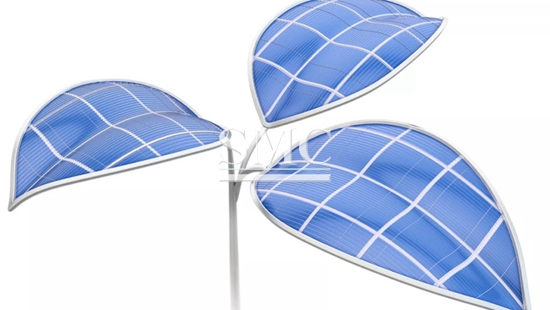
- 금속 알루미늄 제품 동제품 금속 코팅 제품 스테인레스 스틸 제품 강철제품 특수합금
- 구성 스틸 그레이팅 스토리지 랙 스틸 구조물 강철 다리 비계 시스템 건축 재료 화학 재료 프로젝트를 위한 원스톱 솔루션
- 컨테이너 ISO 표준 컨테이너 장비 컨테이너 스토리지 컨테이너 컨테이너 하우스 냉동 컨테이너 / 단열 컨테이너 해양 컨테이너
- 기계 장치 성형기 기타 기계류 절단기 가공기 절곡기 블록 머신 발동기
- 기계 제품 자동차 산업 잡록 계류 장비 해상 장비 압력 용기
- 전기 시스템 전기 케이블 오토메이션 배전 태양열 시스템 전기 보호 시스템 변압기 생산 라인 조명 시스템
- 의료 보조용품 수유 용품 에어웨이 제품 간호 용품 인젝션 제품
- 건설 기계
- epc 프로젝트
인공 잎이 자동차에 동력을 줄 수 있다.
인공 잎이 자동차에 동력을 줄 수 있다.
네, 당신은 그 제목을 정확히 읽었어요. 인공 잎으로 차에 동력을 공급하면 어떨까요? 이 새롭고 혁신적인 기술은 21세기의 "마법"과 "신성한 무덤"으로 불리고 있습니다. 그것은 태양 에너지를 이용하고 이용하여 에너지를 생산한다. 여러분이 무슨 생각을 하고 있는지 알고 있습니다."아, 그냥 태양 전지판이야, 이건 새로운 것이 아니야." 하지만 태양 전지판과는 많이 다릅니다. 이 기술은 인공 광합성이라고 불린다. 식물이 태양 에너지를 사용하여 물과 이산화 탄소로부터 탄수화물을 만드는 것과 같은 방법으로, 연구원들은 에너지가 풍부한 연료와 화학 물질을 만들기 위해 이 과정을 모방합니다. 어떻게 작동할까요?
과정
인공 광합성은 태양 에너지를 이용하여 물과 이산화 탄소를 수소, 산소, 탄소로 나누는 과정이다. 이 수소는 연료로 직접 사용되거나 메탄올 같은 다른 액체 연료를 만들기 위해 다른 원소들과 결합될 수 있다. 이러한 자가 생산 연료는 액체 연료 모델에 비해 무겁고 부피가 크기 때문에 전기 자동차 제조 업체들에게 매우 매력적이다. 더그 맥팔레인 현대 차 ARCExcellence에너지 프로그램 리더는 "수소를 연료 전지에서 직접 생성할 수 있습니다.연료 전지 전기 엔진에 의해 구동되는은 많은 자동차 제조 업체로부터 공급되고 있습니다. 수소는 지붕 태양 전지로부터 에너지를 저장하기 위해 가정 수준에서 저렴한 에너지 저장 기술로도 사용될 수 있다. "이 미래 지향적인 기술은 엄청난 잠재력을 가지고 있지만, 아직도 이 기술을 둘러싼 몇가지 문제와 어려움이 있는 것은 초기 단계이다.
도전
인공 광합성의 주요 도전 중 하나는 효율성이다. 식물의 자연 광합성은 태양 에너지의 약 1퍼센트만을 식물이 사용하는 탄수화물로 바꾼다. 과학자들이 실험실 조건에서의 효율성을 약 10%로 올릴 수 있었지만, 이것은 여전히 너무 낮아서 실행 가능한 에너지원으로 간주되지 않는다. 모나쉬 대학의 전문가들은 이 경계를 넘어서 22%라는 기록적인 비율로 AP에서 수소를 생산할 수 있었다. 연구원들이 AP효율성을 높이기 위해 노력하는 가운데 차량 제조사들은 생산과 라인 업에 이 기술을 접목하는 방안을 모색하고 있다. 전문가들은 우리가 이 기술을 일상 생활에서 활용하기 시작할 것이라고 믿고 있다.
Artificial Leaves Could Power Your Car
Yes, you read that title correctly. What if I told you artificial leaves could power your vehicle? This new and innovative technology is being called “magical” and a “holy grail” of the twenty-first century. It utilizes and harnesses solar power to produce energy. I know what you are thinking, “Oh, just solar panels, that’s nothing new,” but its much different than solar panels. This technology is being called artificial photosynthesis (AP). In the same way that plants use energy from the sun to make carbohydrates from water and carbon dioxide, researchers developed a way to mimic this process to make energy rich fuels and chemicals. So how does this work?

The Process
Artificial photosynthesis is a process that uses solar energy to split water and carbon dioxide into hydrogen, oxygen, and carbon. This hydrogen can then be used directly as a fuel, or it can be combined with other elements to create other liquid fuels such as methanol. These self producing fuels are extremely attractive to electric vehicle makers because today’s batteries are heavy and bulky when compared to liquid fuel models. Doug MacFarlane, leader of the Energy Program of the ARC Centre of Excellence for Electromaterials Science at Monash said, "Hydrogen can be used to generate electricity directly in fuel cells. . . Cars driven by fuel cell electric engines are becoming available from a number of car manufacturers. Hydrogen could even be used as an inexpensive energy storage technology at the household level to store energy from roof-top solar cells. “This futuristic technology has a huge potential, but it is in its beginning stages there are still some issues and difficulties surrounding the technology.
Challenges
One of the main challenges of artificial photosynthesis is the efficiency. Natural photosynthesis in plants only converts roughly 1 percent of solar energy into the carbohydrates used by plants. While scientists have been able to raise that efficiency rate in lab conditions to about 10 percent, this is still much too low to be considered a viable energy source. Experts at Monash University are pushing this boundary and have been able to produce hydrogen from AP at a record rate of 22 percent. While researchers are working hard to increase AP’s efficiency, vehicle manufacturers are looking for a way to incorporate this technology into their production and line ups. Experts believe it won’t be long before we begin utilizing this technology in our everyday lives.